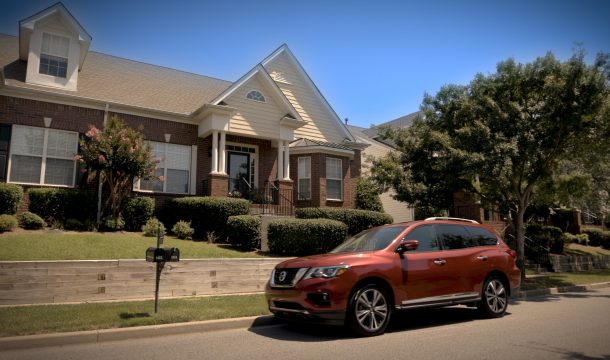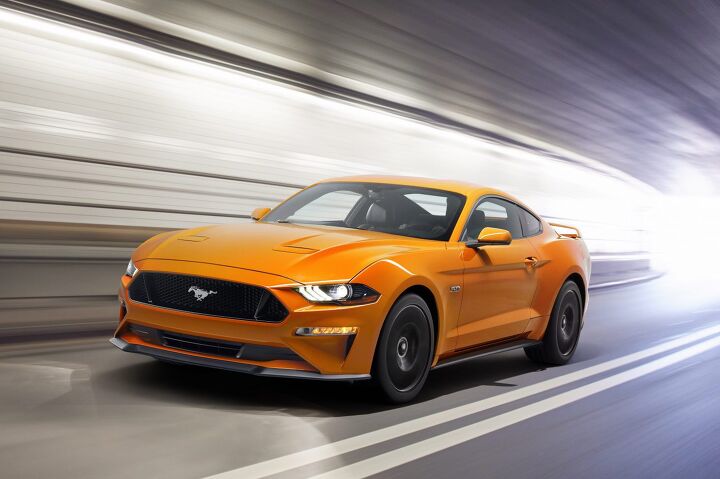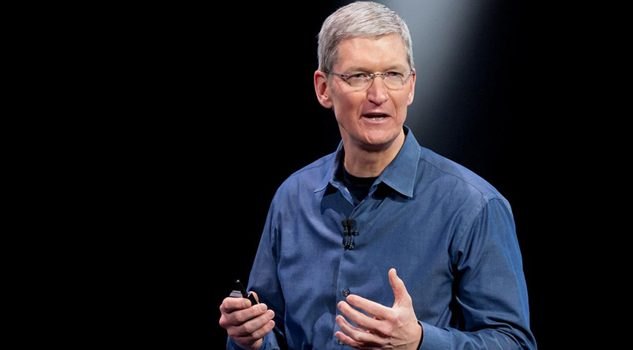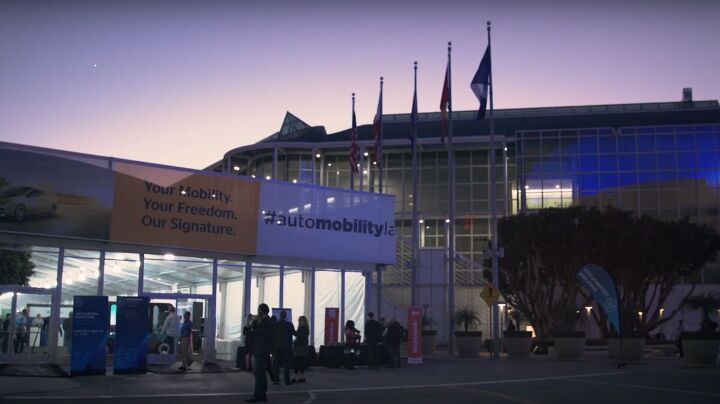#Technology
Mazda Going (Mostly) Sparkless With Skyactiv-X Gasoline Engines, Starting in 2019
There’ll still be spark ignition available, but Mazda doesn’t expect you’ll get a whole lot of use out of it. With its just-revealed Skyactiv-X engine technology, the gasoline-loving automaker has added a new way of making power to the automotive realm: the compression ignition gas engine.
It’s something we’ve known about for a while, but today saw its confirmation. Mazda’s Skyactiv-X engine, bound for its vehicle lineup in 2019, adopts technology forever associated with diesel engines and combines it with a lighter, much cleaner fuel. Apparently, going green needn’t require batteries and AC motors.
Nissan Improves GM's Rear Seat Reminder, Takes Credit for the Initial Idea
Nissan is rolling out a safety feature called Rear Door Alert on the 2018 Pathfinder SUV. It’s aimed at preventing drivers from accidentally leaving items in the backseat on a hot day — important things like groceries, children, and dogs. While the automaker bills the feature as the “first-of-its-kind,” it’s essentially an improved version of General Motors’ Rear Seat Reminder.
According to Nissan, Rear Door Alert was developed by two engineers who also happen to be mothers. Elsa Foley is an industrial engineer and mother of two, while Marlene Mendoza is a mechanical engineer with three kids of her own. They were allegedly struck with the idea when Mendoza abandoned a pan of lasagna in her car, which made the interior reek of pasta — hitting home the point that this system was definitely not inspired by another automaker.
Don't Go All Hybrid/Turbo/Electric/Fuel Cell Just Yet - Toyota V6 And V8 to Gain "Dynamic Force" Camry Engine Tech
Forget hybrids. Set aside, for this moment, plug-in hybrids as well. Ignore the EV hubbub and the pie-in-the-sky hydrogen fuel cells. While you’re at it, remove turbochargers and their accompanying displacement reductions from your memory, too.
The naturally aspirated internal combustion engine has legs. The proof is in the 2018 Toyota Camry’s 2.5-liter Dynamic Force four-cylinder. With no hybrid assist, no turbos, no cord that plugs into your garage wall, and no futuristic fuel source, the new Camry 2.5-liter produces 206 horsepower and hits 41 miles per gallon on the highway on regular 87 octane.
That’s 16-percent more power 24-percent more highway mpg than the 2017 Camry’s 2.5-liter four-cylinder. With improvements in conventional, naturally aspirated, gas-fired engines occurring in such leaps and bounds, it’s no wonder Toyota has bigger plans for the Dynamic Force blueprint.
'Tiny Little Buttons…': Dealership Holds Seminars to Help Old People Understand Weird and Scary Technology
Technology is a major component in what makes a modern-day automobile desirable. It’s so important, in fact, that numerous quality and customer satisfaction surveys have cited owner misunderstandings of a vehicle’s electronic interface as the primary reason for specific models losing marks.
MyFord Touch was among the worst offenders, thanks to unreliable connectivity features and lethargic software. While Sync3 is much improved, it isn’t a perfect system and can still perplex luddites — just like any modern vehicle’s interface.
With that in mind, a Lincoln dealership in Michigan is conducting monthly seminars to help older folks feel more comfortable with all the newfangled electronic gizmos the kids today seem so damn enthusiastic about. It’s the sort of behavior most dealers should have been engaging in from the start but, unfortunately, has been reserved primarily for premium automakers.
Nissan Tries to Make the Brake Pedal Obsolete in Next-gen Leaf
What’s an e-Pedal? No, it’s not some dorky electric bicycle built by Ford, though that scenario doesn’t sound far fetched.
As the steady decline of manual transmission availability brings the three-pedal lifestyle ever-closer to oblivion, the e-Pedal is Nissan’s way of sending the two-pedal setup a step closer to obsolescence. Will cars in the heady, electrically powered future contain just one pedal? Maybe. Maybe not. But starting late this year, one Nissan model will allow drivers the choice of accelerating and braking with just one pedal.
New Ford Patent Seeds Engine With Water, Promises Horsepower Boost
Ford’s German division has filed a patent for a new water injection system that could bring exponential improvements in efficiencies and high horsepower gains.
Truthfully, water injection isn’t a new technology, World War II fighter planes used vaporized water to improve low-speed thrust during take off, plus, an extra spurt of speed during dogfights. Post-war, both Saab and Oldsmobile offered vehicles with factory installed water injection systems before the technology enjoyed a renaissance in high-performance Group B rally cars during the 1980s.
Traditionally, water injection has been used as a shortcut to high performance, where a 50/50 water-alcohol mix is injected into the intake manifold where it’s used to lower combustion temperatures and cool the pistons and cylinder walls. This, in turn, reduces the likelihood of detonation and allows for higher compression ratios, which can manifest as either higher performance metrics or a more efficient engine.
But where Ford’s design differs is its focus on injecting water directly into the combustion chamber instead of its traditional upstream location in the intake tract.
2018 Honda Odyssey: Rear Seat Erotic Entertainment Was at Your Fingertips
Who knew the well-equipped 2018 Honda Odyssey was so… titillating? An unsuspecting journalist over at Forbes saw a few more — let’s call them entertainment options — than she expected while browsing through the video selection offered via her Odyssey tester’s rear media screen.
At that point, things became a little hot under the collar at Honda.
Defiant Kangaroos Stand Firmly in Path of Soulless, Self-Driving Future
Who knew strange animals born with a sack stuck to their bellies would prove to be the largest hurdle in the advent of driverless vehicles? In areas where you’ll find marsupials, anyway.
While North American drivers have long grown used to smacking deer with their personal vehicles, it’s a different story in the land of Paul Hogan, Nicole Kidman, and the amiable fellow from Jurassic Park. A full 80 percent of vehicle-animal collisions on that extremely large island and/or continent involve a kangaroo. It now seems the manner in which the limber creatures get around has created a headache for a certain Scandinavian car company — one hoping to lead the industry in hands-off driving.
Apple, Google, and Autonomous Driving: Way Mo' to This Than Meets the Eye?
Earlier this month, Apple and Google both announced plans to kill off their self-driving car projects in favor of focusing on developing the underlying technology. We reported it here. But it’s a little weird that one announcement came so close on the heels of the other. Apple’s Project Titan, formerly a self-driving car project, will presumably continue to compete with Google’s Waymo, which is a subsidiary for Google’s efforts thus far in the field. It’s a race, even if neither company has acknowledged it as such.
Last we knew, Project Titan was testing self-driving Lexus RX450h SUVs around Silicon Valley, which were first spotted in late April. Waymo was arguably more successful, since they’d actually succeeded in building a fleet of the Firefly self-driving car pod.
Apple and Google are both being vague about this change in plans, as usual, but we already know a fair amount about how these companies interact with auto manufacturers. We just need to look at Apple CarPlay and Android Auto smartphone integration. Some automakers eschew these systems entirely, in favor of their own native smartphone integration and infotainment interfaces. A handful of manufacturers have chosen to support just one or the other.
Many car brands, though, have decided to offer both interfaces to appeal to the most broad range of customers. In this way, Apple and Google both exert considerable influence on automakers based simply on the fact that they sell smartphones.
If Project Titan and Waymo both succeed at becoming functional and user-friendly self-driving car systems, car buyers can expect something similar.
Nissan's Next-gen Leaf Will Kind of, Sort of, Drive Itself
After hemming and hawing for what seemed like forever, Nissan will bring American electric vehicle enthusiasts a long-overdue new Leaf later this year. Say goodbye to that old, swoopy body and 107-mile range (at best), and give a cheerful hello to a not-yet-revealed body, undisclosed driving range, and these headlights.
Okay, so there’s not a whole lot known about the next Leaf except that it won’t be an ancient thing that appeared at the dawn of the electric car resurrection. You might be able to drive to a nearby city and back. However, we now know that trip doesn’t have to be as hands-on as it once was.
Toyota Vows to Stop Being Such a Dinosaur, Muses Partnerships as a Shortcut
Despite being Japan’s biggest automaker, Toyota has lagged behind many of its rivals in terms of cutting-edge technology. Most major car manufacturers have already begun developing self-driving vehicles, with some going so far as to make strategic partnerships with companies specializing in the applicable technologies. By contrast, Toyota has a strong R&D program but never saw fit to pursue autonomous development or battery-electric vehicles quite so aggressively as General Motors or Renault-Nissan, for example.
Toyota President Akio Toyoda has now admitted that may have been a mistake. At the company’s annual shareholders meeting on Wednesday, he promised the automaker would become more committed to achieving technical developments. Toyoda didn’t bring forward a concrete strategy but conceded the spending of additional capital would likely play a role — and an alliance or two isn’t out of the question.
Apple CEO Dubs Self-driving Car Program 'the Mother of All A.I. Projects'
Apple has been perpetually flip-flopping in terms of developing autonomous vehicles. In 2014, the company was rumored to have begun work on an autonomous electric car, codenamed “Project Titan,” with hundreds of employees devoted solely to its development.
Management issues and logistical problems impaired its progress, leading Apple to abandon the project. Since then, Bob Mansfield has fronted a renewed effort to focus on building an autonomous driving system rather than a complete car. At least, that was everyone’s best guess, as the company has been semi-secretive about its mission since day one.
That changed on Tuesday, when CEO Tim Cook confirmed that Apple does indeed have a self-driving development program. The chief executive even went so far as to call it “the mother of all A.I. projects.” That’s quite the claim to make, considering making the tech work on a car is half the battle and Apple has no practical experience building an autonomous vehicle.
If Robots Can Build Our Cars, Why Don't They Service Them?
Robots may be able to assemble your car, but they aren’t going to be servicing it anytime soon. Automation has made many industrial occupations irrelevant over the last few decades. Machines have even begun entering the fast-food industry and proven themselves adept line cooks. So then why aren’t they changing your oil?
The technology is available but implementing it is too damned expensive and slow. No machine yet qualifies as a “full-service” device, so centers would have to purchase multiple rigs and keep someone on staff to operate them — not exactly cost-effective. However, as those machines come down in price and gain in number, we’ll begin seeing them put into use more and more. Eventually, you’ll be returning to the servicing department to complain about a robot ruining your car instead of an inexperienced mechanic. But when?
Get Your Wacky On: AutoMobility LA's Ten Best Automotive Startups Competition Begins
The Los Angeles Auto Show is once again hosting the Top Ten Automotive Startups competition and has opened the door for entrants. If you’ve ever wanted to troll a major automotive trade show with your worst ideas or promote your extremely flimsy business model, this is your opportunity.
Of course, the application process also works if you have a legitimate business you’re looking to showcase. Thanks to the LA Auto Show’s decision to rebrand itself as “AutoMobility LA,” the bar for entry is fairly low. Your automotive startup could involve a drone that finds your keys or a mobile app where people rank the visual appeal of various tire tread patterns. It really only needs to be vaguely auto related. Think we’re kidding? Previously selected winners include Elio Motors, Urb-e scooters, and HopSkipDrive — a ride hailing application aimed specifically at children.
Android Auto, Apple CarPlay Available to 2016 Ford Owners, If They Want It
It looks like Ford’s offer to update 2016 vehicles equipped with its SYNC 3 infotainment system with free Apple CarPlay and Android Auto connectivity has a lot to do with some recent hires.
The automaker has announced it will allow owners of one-year-old vehicles to install the feature, which comes standard on all 2017 models, at no cost. The offer positions Ford near the cutting edge in automotive technology. For a company seeking a starring role in the tech-heavy mobility realm, this is exactly where it wants to be.






























Recent Comments